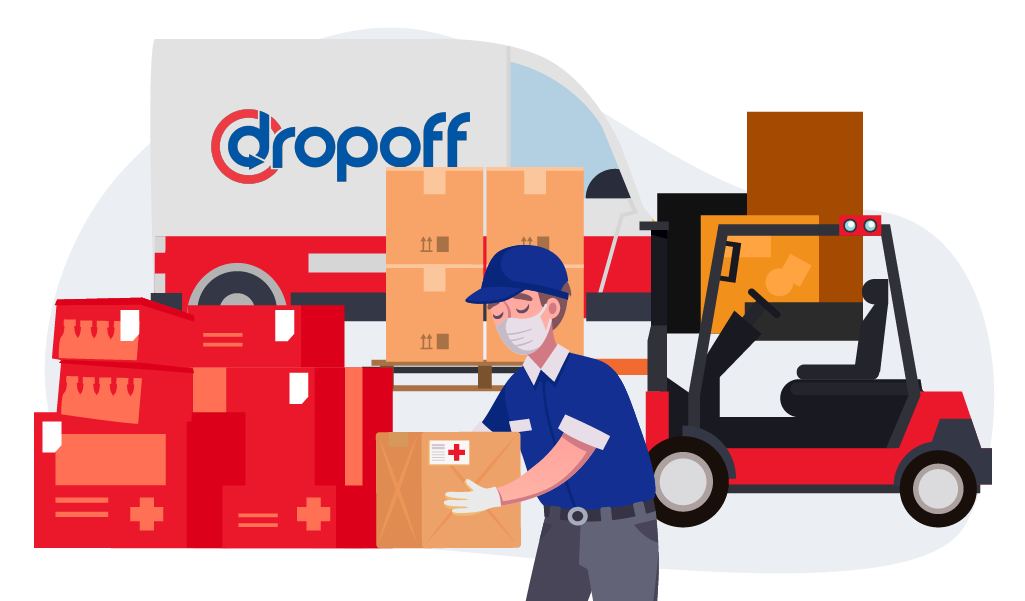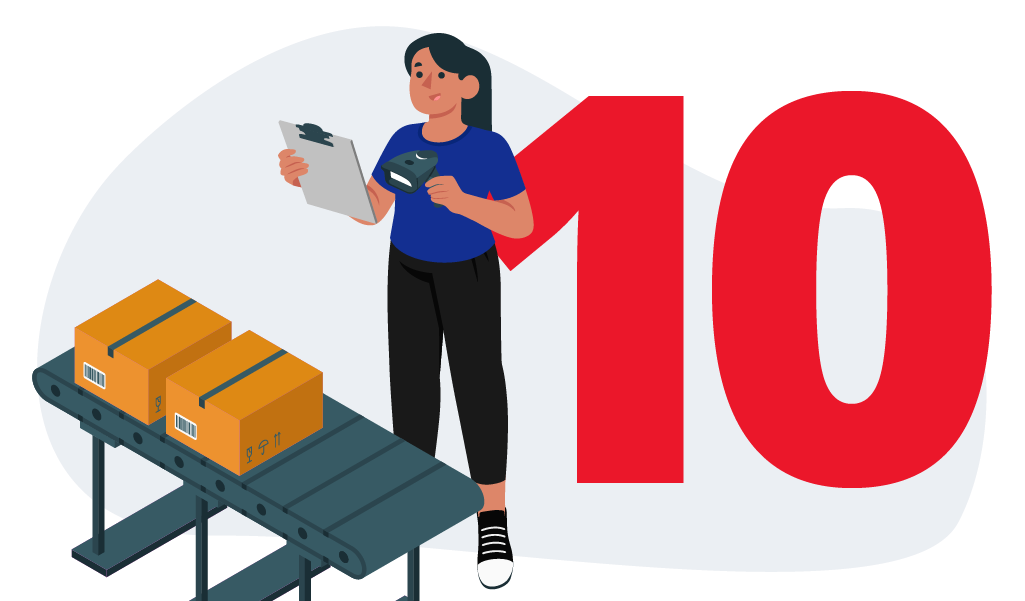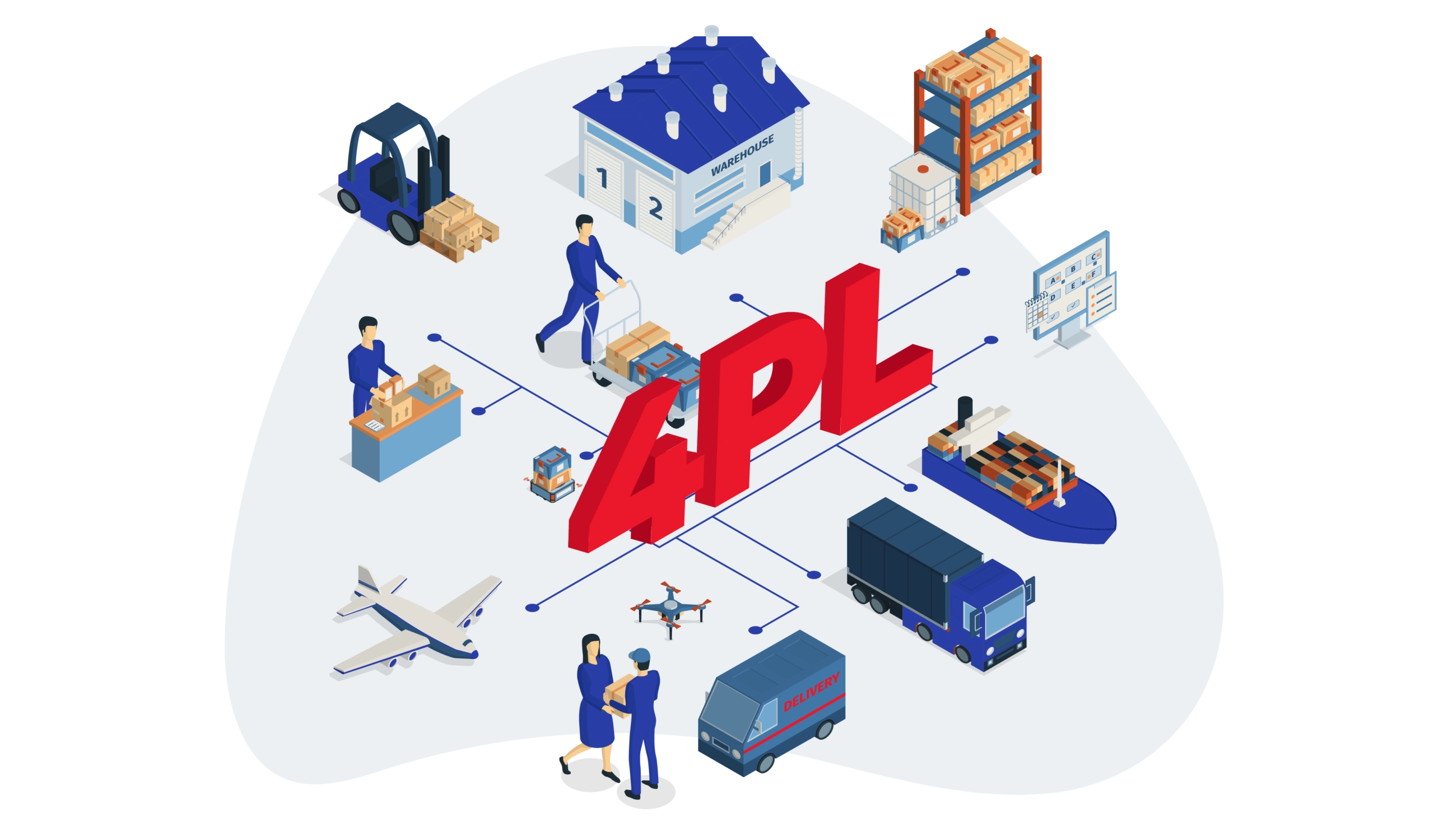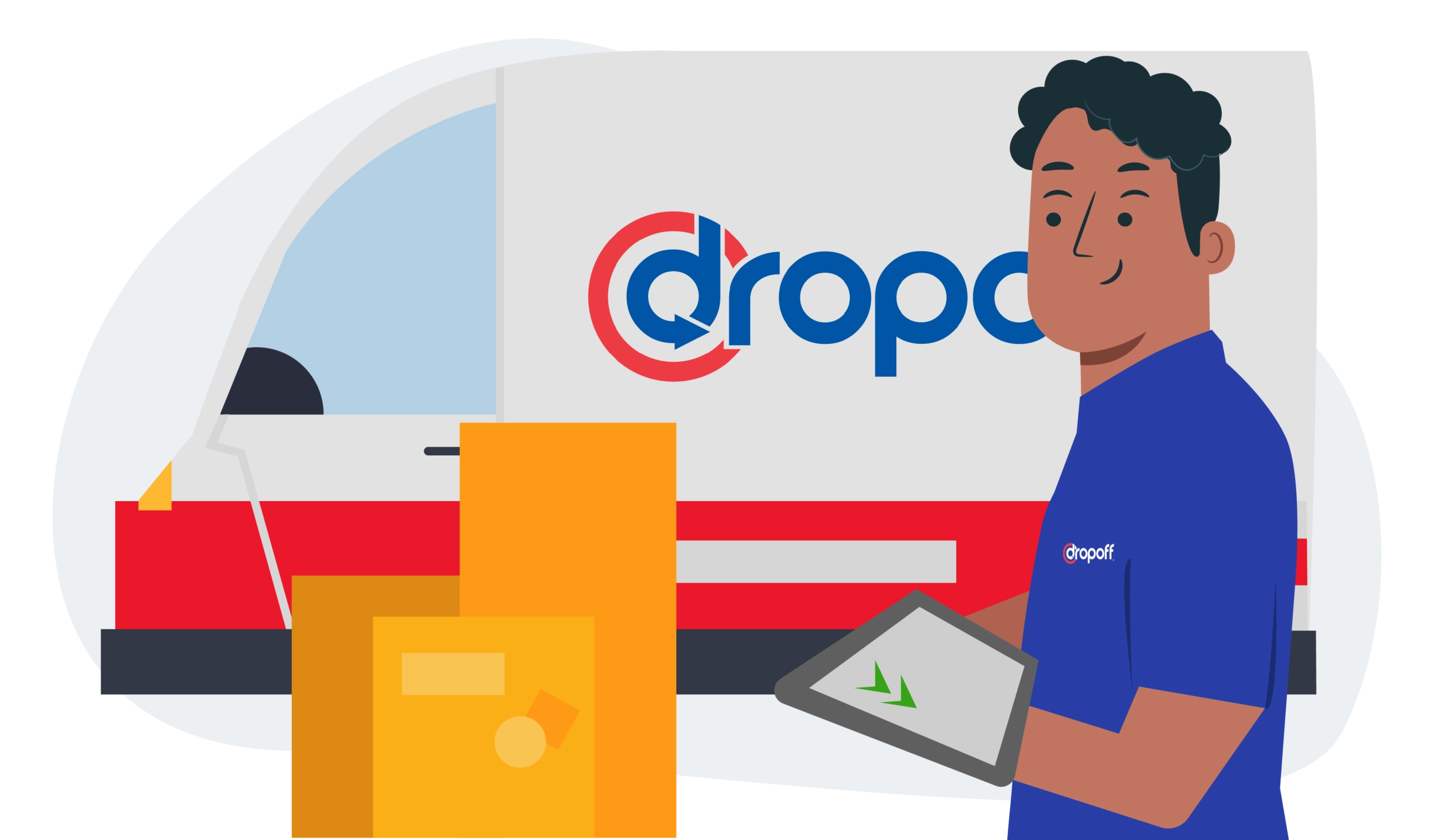Future Of Last-Mile Delivery And Trends For 2024
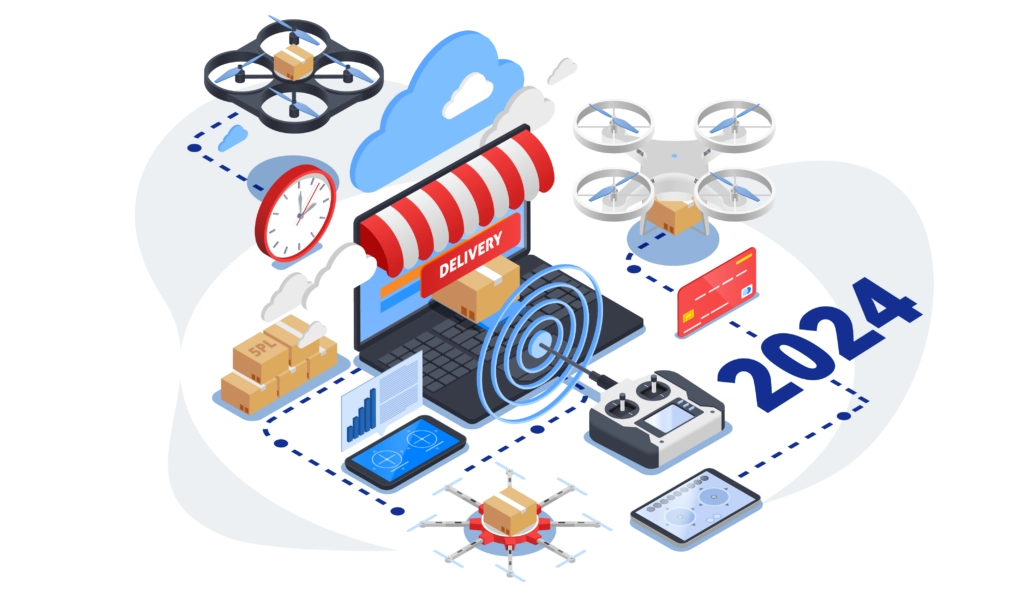
In this article, we’ll delve into the future of last-mile delivery and the trends in 2024. The last mile is the final stage of delivery, where packages are transported from a transportation hub to the end customer.
With online shopping on the rise, the demand for efficient last-mile solutions is also increasing. We’ll explore how technology is transforming delivery methods and how to address the industry’s challenges.
Our goal is to give a clear overview of the industry trends in the coming year.
The Promising Future Of Last-Mile Delivery Innovations
The last mile of delivery, spanning from warehouses or distribution centers to customers’ addresses, poses significant challenges within logistics, accounting for an estimated 41-53% of total supply chain costs.
With the last mile delivery market forecasted to expand by approximately USD 60.82 billion and a compound annual growth rate (CAGR) of 5.12% between 2023 and 2028, factors such as the burgeoning global e-commerce sector, heightened demand for premium delivery services, and the proliferation of warehouses are driving this growth.
In the landscape of 2024, technology emerges as a key driver for enhancing efficiency, cost-effectiveness, and customer satisfaction, while businesses are also prioritizing the adoption of clean technologies to reduce their carbon footprint. Additionally, amid the ongoing pandemic, ensuring the safety and security of deliveries remains paramount.
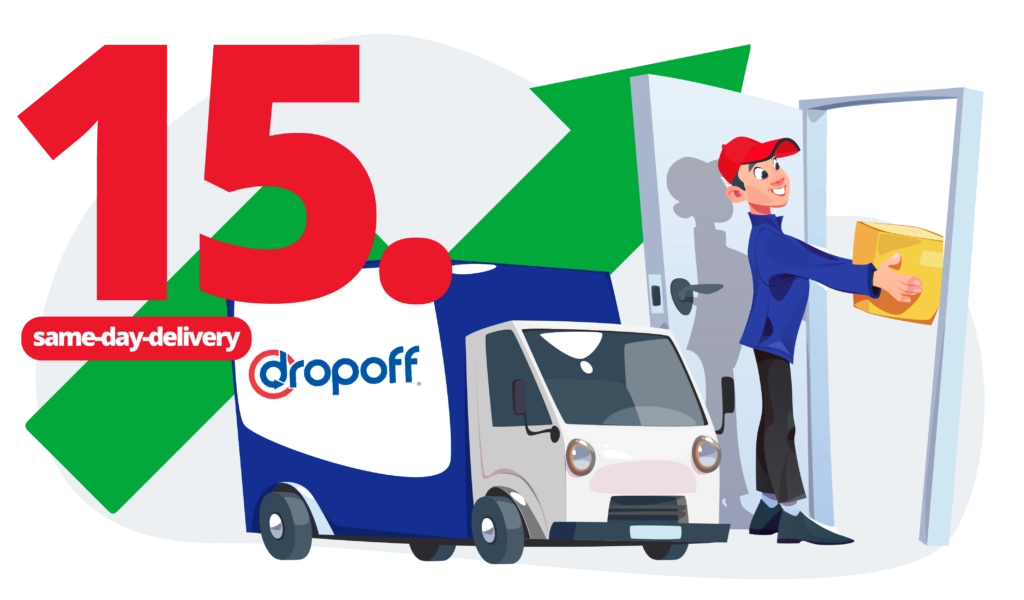
Top 15 Last-Mile Delivery Innovations And Trends In 2024
Here are thirteen last-mile innovations and trends you can look forward to in 2024.
1. Extension of Last-Mile Services to 4PL and 5PL
Fourth-Party Logistics (4PL) and Fifth-Party Logistics (5PL) mark a significant evolution in last-mile delivery beyond the scope of traditional Third-Party Logistics (3PL).
While 3PL providers handle specific segments of the supply chain, 4PL and 5PL take a more comprehensive approach, managing the entire logistics function and even extending their focus to broader supply networks. 4PL providers offer strategic guidance and coordination among various 3PLs, aiming to optimize overall logistics efficiency. Meanwhile, 5PL providers specialize in managing expansive supply networks, leveraging technology and data analytics to provide valuable insights for businesses, particularly those in e-commerce reliant on efficient supply chains.
Collectively, 4PL and 5PL represent a paradigm shift towards integrated and sophisticated last-mile delivery solutions, enhancing operational efficiency and customer satisfaction beyond the capabilities of traditional 3PL providers.
2. Hybrid Fleet with Autonomous Vehicles, Drones, and Other Delivery Vehicles
Retailers are adapting to the evolving landscape of last-mile delivery by integrating autonomous vehicles, drones, and other technological delivery vehicles into their operations alongside third-party providers and crowdsourced delivery options. This hybrid model offers greater control and adaptability but requires sophisticated last-mile delivery technology for optimal management.
Despite the potential benefits of reduced costs and improved customer experiences, navigating the complexities of this approach remains challenging, leading many companies to continue relying on third-party logistics providers for support.
Amazon’s utilization of its fleet alongside third-party logistics providers exemplifies this hybrid model’s effectiveness in efficiently delivering products to customers.
3. More Comprehensive Third-Party Partnership
Businesses today increasingly prefer tailored solutions when partnering with third-party logistics (3PL) providers. These tailored solutions cater specifically to the unique needs and challenges of each business, offering customized services and support to optimize logistics operations.
Instead of opting for one-size-fits-all approaches, businesses seek 3PL providers who can adapt their services to align with the specific requirements, goals, and industry nuances of their clients.
For example, Elite Medical Lab based in Houston, TX, implemented a comprehensive partnership with Dropoff to enhance their logistics operations. Dropoff provided a tailored solution, offering real-time tracking visibility, professional drivers, and efficient routing schedules.
As a result, Elite Medical Lab saw a 55% decrease in turnaround time and eliminated lost shipments, enhancing customer satisfaction and streamlining operations.
4. The Use Of Big Data
Big Data analytics is revolutionizing last-mile deliveries by offering valuable insights to optimize operational processes and enhance customer satisfaction. With the exponential growth in parcel shipping volume globally, last-mile delivery companies are leveraging extensive data sets to improve transparency, identify weaknesses, and address obstacles in real time.
Furthermore, Big Data analytics enables companies to enhance process quality and performance in last-mile deliveries by leveraging real-time data collection and analysis. By planning ahead for demand, optimizing transportation routes, and improving order accuracy, companies can achieve faster and more reliable deliveries, leading to increased customer satisfaction and loyalty.
An example is Amazon, which uses predictive analytics to recommend products to customers based on their purchase history and browsing behavior. That way, they are more likely to purchase a product.
5. Urban Warehousing and Micro-Fulfillment
The rise of urban warehousing and micro-fulfillment is also shaping the future of last-mile delivery. As customers demand same-day delivery options, businesses seek ways to minimize transit time and enhance the delivery experience.
By locating warehouses in urban areas, companies reduce the distance between customers and warehouses, thus improving delivery speed and efficiency. This approach enhances the customer experience and increases the efficiency of in-house teams by reducing the burden on them.
Urban warehousing is most relevant for e-commerce businesses and logistics companies looking to optimize their delivery process. Check out our guide on reverse logistics.
6. AI-Powered Real-Time Tracking Technology
Real-time tracking in logistics has evolved significantly in 2024, becoming a crucial element in enhancing operational efficiency, customer satisfaction, and cost savings.
The integration of AI and Machine Learning technologies allows for predictive analytics, enabling companies to foresee potential disruptions and streamline operations preemptively. This level of real-time visibility empowers logistics managers to make data-driven decisions swiftly and confidently, ultimately reshaping the future of logistics.
An example of advanced real-time tracking in logistics is demonstrated through Django Stars’ partnership with a leading U.S. logistics company. By implementing real-time logistics data tracking using advanced GPS tracking and software systems, the company gained real-time access to crucial information, including order receipts, shipping details, and regulatory data. This newfound visibility enhanced operational efficiency, improved decision-making, and reduced uncertainties, leading to increased productivity, cost savings, and customer satisfaction.
7. Automated Last-Mile Delivery Management Platforms
Last-mile delivery management platforms automate and improve delivery planning, orchestration, and optimization processes. Companies can leverage their fleet as well as third-party logistics partners.
Walmart has completed over 6,000 drone deliveries within 30 minutes or less. It also plans on using its 4,700 stores as delivery hubs. By addressing last-mile industry challenges with innovative solutions, companies achieve greater agility across their entire delivery network. Eventually, this leads to higher profits.
8. Route Planning And Optimization Software
Route planning and optimization software help businesses streamline their delivery processes, achieve quick deliveries, and improve overall efficiency. It is vital for companies that rely on many deliveries, as it minimizes delivery times.
This technology also reduces costs by minimizing fuel consumption and the number of vehicles needed for deliveries.
For example, a retail company that receives a high volume of online orders will use route planning and optimization software to complete all the deliveries. Route planning and optimization software help adapt to traffic, weather conditions, and other factors.
9. Internet of Things (IoT) and Blockchain Technologies
The integration of blockchain and IoT technologies holds immense promise for revolutionizing last-mile deliveries, addressing challenges in tracking, efficiency, and trust within the logistics landscape. IoT devices offer real-time data for optimized delivery routes and secure package handling, while blockchain ensures transparency and traceability, enhancing trust and accountability in e-commerce transactions.
This strategic combination not only promises operational efficiencies and cost savings but also has the potential to redefine the logistics industry, with the digital transformation projected to unlock over $1.5 trillion in value by 2025.
10. Sustainable Last-Mile Deliveries
In 2024, sustainability is significantly shaping the logistics landscape, particularly in last-mile delivery. Sustainability in logistics refers to the actionable steps businesses take to reduce the environmental impact of their processes, such as carbon offsetting, optimizing transport routes to reduce emissions, and switching to electric vehicles.
With the European Environment Agency predicting that logistics could account for up to 40% of global carbon dioxide emissions by 2050 without effective measures, businesses are increasingly focusing on green logistics practices. Route optimization software like Circuit is now being utilized to reduce carbon emissions in last-mile delivery by efficiently planning delivery routes, thereby minimizing the distance traveled by delivery vehicles and reducing fuel consumption.
11. Contactless Delivery
Contactless deliveries are becoming more relevant as businesses adapt to the new normal post-pandemic. Customers are now more conscious about their safety and want companies to take necessary precautions during deliveries.
Businesses adapt to this trend by implementing contactless proof of deliveries, which is done through digital signatures or other contactless methods.
A company that adapted to this trend is Uber, which has introduced contactless delivery options to customers for a while now. These options allow customers to choose a delivery method that best suits their needs and preferences.
12. Omnichannel Retailing
Omnichannel retailing is becoming more popular as customers expect a seamless shopping experience across multiple channels. Businesses integrate various sales channels, like phones and physical stores, to provide a convenient customer shopping experience.
Amazon allows customers to purchase products online or pick them up at a nearby physical store. There is even an option to return them to a store instead of mailing them back.
In 2023, we will see a surge in omnichannel retailing as businesses meet customer demands and stay competitive.
Here’s everything you need to know about omnichannel third-party logistics.
13. Predictive Shipping
Predictive shipping is a strategy in supply chain management that utilizes predictive analytics to forecast and anticipate customer demand, inventory levels, and transportation requirements. By analyzing historical data and trends, predictive shipping enables companies to optimize their logistics operations, including last-mile deliveries. This approach allows businesses to better plan routes, allocate resources efficiently, and minimize delays, ultimately improving the speed and reliability of last-mile deliveries.
With 31% of companies already employing predictive analytics for supply chain management, predictive shipping is becoming increasingly prevalent and influential in enhancing the effectiveness of last-mile delivery services.
14. Hyper-Personalization of Deliveries
The hyper-personalization of deliveries is transforming the landscape of last-mile logistics by catering to individual customer preferences and expectations. With 71% of consumers anticipating personalized interactions, and 76%expressing frustration when these expectations are not met, companies are under pressure to tailor their delivery experiences.
This trend prompts logistics providers to adopt advanced technologies and data analytics to customize delivery options such as preferred time slots, delivery locations, and communication channels. By offering personalized delivery experiences, companies can enhance customer satisfaction, loyalty, and retention, ultimately shaping the efficiency and effectiveness of last-mile deliveries.
15. Same-Day Deliveries Becoming a Norm
The normalization of same-day deliveries in 2024 is significantly impacting last-mile logistics by raising consumer expectations for rapid order fulfillment. With 90% of consumers viewing 2- to 3-day shipping as the standard, any delay falls short of their expectations. Furthermore, the demand for same-day delivery has intensified, with nearly a third of consumers (30%) now expecting this level of service.
This shift in consumer behavior is driving logistics companies to optimize their last-mile operations, leveraging advanced technologies and strategic partnerships to meet the growing demand for swift and efficient deliveries.
How Dropoff Can Help With Last-Mile Deliveries
Urban warehousing, real-time tracking, autonomous vehicles, sustainable delivery methods, and the list goes on. The last-mile delivery industry is undergoing major changes to improve the customer experience and streamline logistics operations. This year, businesses must stay informed of these trends and invest in innovative solutions to keep up with the competition.
At Dropoff, we are at the forefront of these changes and are dedicated to providing the best last-mile delivery services. Our team stays informed of the latest trends in last-mile delivery, allowing us to offer cutting-edge solutions for everyone.
Whether you are a small or large business, we have the resources and expertise to meet your delivery needs.
Talk with a Dropoff expert today and stay ahead of the competition.
Frequently Asked Questions
The future of last-mile delivery involves significant innovations and trends aimed at enhancing efficiency, reducing costs, and improving customer satisfaction. Key developments include the extension of last-mile services to encompass Fourth-Party Logistics (4PL) and Fifth-Party Logistics (5PL), the adoption of hybrid fleets with autonomous vehicles and drones, and the use of big data analytics to optimize operations.
New technology for last-mile delivery includes autonomous vehicles, drones, real-time tracking technology powered by AI, automated last-mile delivery management platforms, and route planning and optimization software.
To optimize last-mile delivery in 2024, businesses can adopt various strategies such as leveraging comprehensive third-party partnerships tailored to their specific needs, utilizing big data analytics for insights and optimization, investing in sustainable delivery methods, offering contactless delivery options, and embracing omnichannel retailing to provide a seamless shopping experience across multiple channels. Additionally, implementing predictive shipping strategies based on predictive analytics can help forecast customer demand and optimize logistics operations for more efficient last-mile deliveries.

